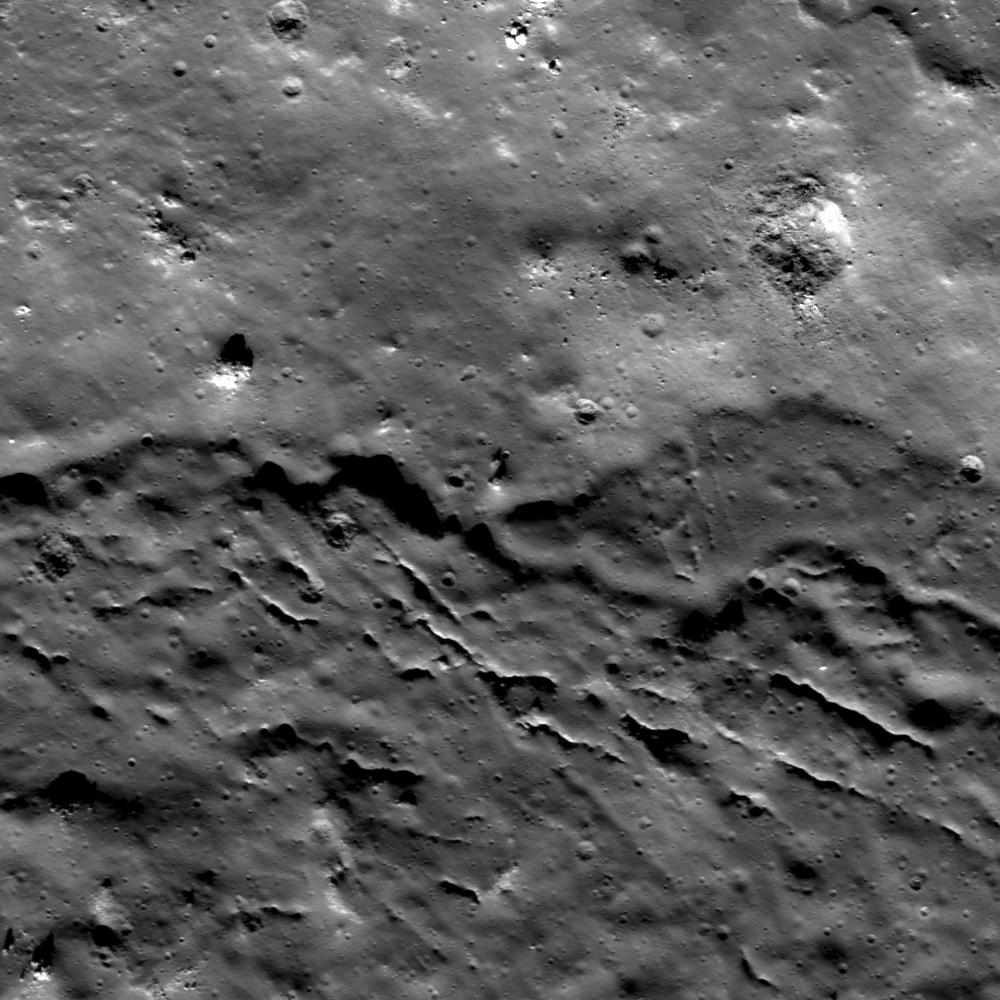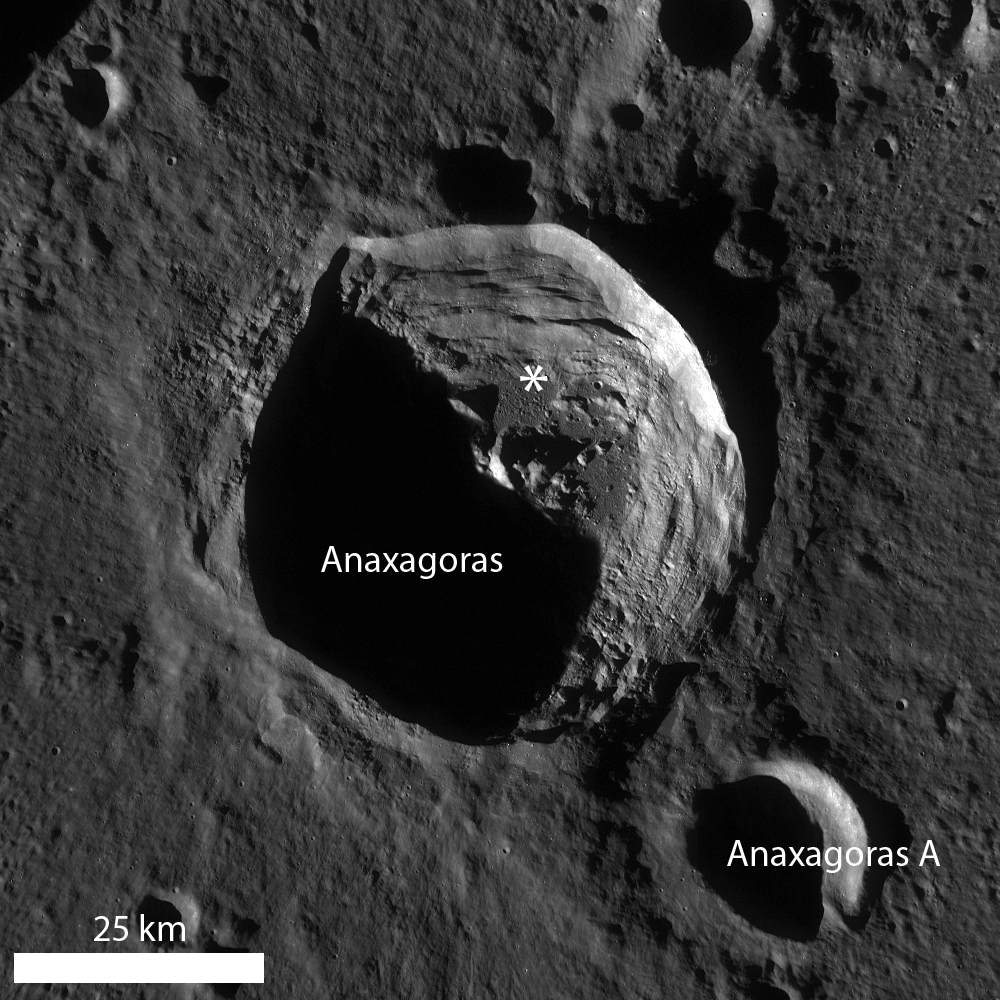
Although impact crater formation is a nearly instantaneous event, impact melt cooling is not. For large craters such as Tycho, Copernicus, and Anaxagoras, so much impact melt was created during the impact process that the crater floors were, in effect, flooded by molten seas of melt. The melt pooled in topographic lows, flowed around the central peaks, and became mixed with loose ejecta blocks to create a hummocky texture on the crater floor. Cooling cracks and collapse pits are prevalent; subparallel groupings of cracks are common near melt boundaries and in regions with entrained blocks.
Like volcanic lava, impact melt may remain molten for an appreciable amount of time - days, weeks, and years in some cases. The floor melt pond in Anaxagoras was molten for a while, and mobile enough to splash onto the crater walls to form "bathtub rings" (upper right corner in the opening image, also beautifully visible in more detail in the full NAC image). The splashing probably occurred as large blocks of wall material slumped into the ponded melt causing a tsunami of melt!
Today's Featured Image focuses on the boundary of the floor melt pond with the northern crater wall where two lobes of melt overlapped (73.830°N, 350.368°E). Looking to the left of the image, you can trace the melt contact with the crater wall and follow it toward the right side of the image. A moat-like boundary at the edge of the flow of this top layer of melt distinguishes it from the layer beneath. The stratigraphically lower layer of melt is first visible in the center of the image and extends toward the image right.
What may have happened was that this section of the melt splashed up the crater wall to form the first bathtub ring (barely visible in the opening image top right) and flowed back down the wall. Then the melt flowed up the wall again where some melt stuck to the wall because it had sufficiently cooled and a crust had formed, and the melt stuck up on the wall (lobe on the right side of the opening image). Perhaps the melt near the center of this sub-pond remained quite warm and mobile and the melt flowed again toward the wall. The melt then onlapped and superposed the cooled, frozen section of melt near the wall but the melt boundary with the wall cooled sufficiently to stick and totally freeze, thus preserving multiple splashes and slurps of melt on the crater wall. But that is only one possible story - topographic data, melt cooling models, and observations at other craters would be helpful in discovering the history of melt cooling at Anaxagoras.
Check it out! Take a look at the full LROC NAC image - how many impact melt "bathtub rings" and overlapping melt lobes can you find?
Related Posts:
Impact melt in Anaxagoras crater
More Impact Melt!
Published by Lillian Ostrach on 16 January 2013
